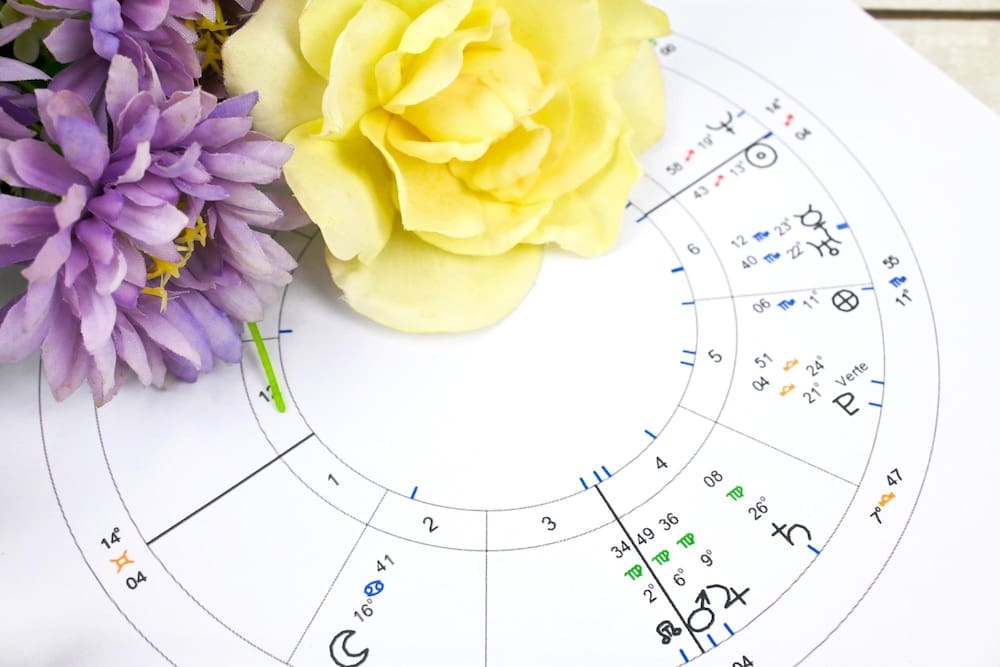The Navamsa chart, known in Vedic Astrology as the D9, serves as the ultimate celestial roadmap for understanding one’s dharma (life purpose) and the intricate dynamics of marriage. For any individual seeking to comprehend their inner self and the nature of their most significant relationships, the D9 chart provides the critical “why” behind the promises seen in the main birth chart. Calculated by dividing each zodiac sign into nine equal portions, this ninth harmonic chart acts as a microscopic lens, revealing the soul’s true quality, the characteristics of a future spouse, the overall fortune of a partnership, and the spiritual path one is destined to walk, making it an indispensable tool for any serious astrological analysis.
What is the Navamsa (D9) Chart?
In the vast system of Vedic Astrology, the primary birth chart, called the Rasi chart or D1, represents the physical world and the tangible promises of our life. However, ancient seers developed a system of sixteen primary divisional charts, or Vargas, to examine specific areas of life with greater precision. Among these, the Navamsa (Nava meaning nine, Amsa meaning division) is considered second in importance only to the Rasi chart itself.
Its calculation is mathematically precise. Each zodiac sign spans 30 degrees, and for the D9 chart, each sign is divided into nine equal segments of 3 degrees and 20 minutes each. The placement of a planet in the Navamsa chart is determined by which of these nine segments it falls into in the Rasi chart. This process creates an entirely new chart that functions as a soul-level blueprint.
A popular analogy compares the Rasi chart to a tree and the Navamsa chart to its fruit. The tree (D1) might look healthy and promise a great harvest, but only the quality of the fruit (D9) reveals the true outcome. The D1 chart shows our external personality and life circumstances, while the D9 reveals our inner character, strengths, and the ultimate results we will experience.
The Navamsa as the Chart of Dharma
While widely famous for its marital predictions, the Navamsa’s primary purpose is to illuminate one’s dharma. In the Vedic context, dharma is not simply religion; it is one’s inherent nature, righteous duty, and the unique purpose for which a soul has taken birth. It is the path of right action that leads to fulfillment and spiritual evolution.
The D9 chart reveals the core values and inner motivations that guide us. The Ascendant (Lagna) of the Navamsa chart, along with its ruling planet, signifies our inner self and the environment we need to feel aligned with our purpose. A strong Navamsa Lagna lord indicates a person with a powerful inner compass and the integrity to follow their path.
The dharma trine—the 1st, 5th, and 9th houses—in the D9 chart is of paramount importance. The 1st house is the self, the 5th represents our creative intelligence and legacy, and the 9th signifies higher wisdom, belief systems, and grace. The condition of these houses and their lords in the Navamsa chart shows how gracefully we can fulfill our life’s mission.
The Navamsa and the Promise of Marriage
The Navamsa chart earned its reputation as the “marriage chart” because Vedic wisdom views marriage as a foundational pillar of dharma. A partnership is seen as a sacred union that supports the spiritual growth of both individuals. Therefore, the chart that reveals dharma must also reveal the nature of this key relationship.
The D9 chart acts as the final confirmation of marital promises seen in the Rasi chart. The 7th house of the Rasi chart may indicate marriage, but the D9 chart describes its quality, timing, and longevity. A strong 7th house in the D1 chart can be undermined by severe afflictions in the D9, leading to challenges or delays.
Conversely, a challenged 7th house in the D1 chart can be significantly improved by a strong and well-placed 7th lord in the Navamsa. This indicates that despite initial obstacles, the individual has the inner fortitude and karmic merit to create a successful and supportive union.
Analyzing the Spouse from the D9 Chart
The Navamsa offers stunningly accurate details about one’s life partner. The 7th house of the D9 and its lord are the primary indicators. The sign on the 7th house cusp reveals the general temperament of the spouse. For example, an airy sign like Gemini or Libra might suggest an intellectual and communicative partner, while a watery sign like Cancer suggests a nurturing and emotional one.
Planets placed within the D9’s 7th house add specific characteristics. Venus here can indicate a charming and artistic spouse, while Saturn might point to a mature, disciplined, and perhaps older partner. Mars can suggest a partner who is assertive and courageous, while Jupiter indicates a wise, optimistic, and principled individual.
The placement of the D9’s 7th lord in the various houses of the Navamsa chart further describes the dynamics of the relationship. For instance, if the 7th lord is in the 10th house of career, the spouse may be career-oriented, or the native might meet them through their profession.
Timing of Marriage with the D9
Astrologers rely heavily on the Navamsa chart for accurately timing marriage. This is typically done using the Vimshottari Dasha system, a method of planetary periods. Marriage often occurs during the major or sub-period of planets that are strongly connected to the 7th house of the Navamsa chart.
Specifically, the dasha periods of the planet owning the D9’s 7th house, planets occupying the D9’s 7th house, or the dispositor of Venus (the natural significator of marriage) in the D9 chart are potent periods for marriage to manifest. Furthermore, the transits of the great teachers, Jupiter and Saturn, over these key planets or houses in both the D1 and D9 charts simultaneously often provide the final trigger for the event.
Key Concepts for D9 Interpretation
To unlock the full potential of the Navamsa chart, one must understand a few advanced concepts that add layers of meaning to the analysis.
Vargottama Planets
A planet is considered Vargottama when it occupies the same zodiac sign in both the Rasi (D1) and Navamsa (D9) charts. This is a position of exceptional strength and stability. A Vargottama planet feels “at home” and delivers its results with purity and power throughout the individual’s life.
For example, a Vargottama Sun bestows immense confidence, leadership, and authority. A Vargottama 7th lord can indicate a very stable marriage that becomes a defining feature of one’s life. Even a naturally malefic planet, when Vargottama, gives strong, though sometimes challenging, results related to its nature.
The Atmakaraka (AK) in the Navamsa
The Atmakaraka, or “soul significator,” is the planet that has attained the highest degree within any sign in the Rasi chart. Its position in the Navamsa chart is of profound spiritual importance. The sign it occupies in the D9 is known as the Karakamsa.
The house where the Atmakaraka is placed in the D9 chart reveals the soul’s deepest desires and karmic lessons. If the AK is in the 12th house of the D9, for instance, the soul’s primary desire is for liberation (moksha). If it is in the 10th house, the soul seeks to achieve great karma and status through its work.
Pushkar Navamsa
Pushkar Navamsas are specific, highly auspicious segments within the zodiac. There are 24 such segments in total. When a planet falls into a Pushkar Navamsa, its energy is purified, nourished, and enhanced. This is a point of divine blessing.
This concept is especially useful for remediation. A planet that is debilitated or afflicted in the Rasi chart can be saved from giving its worst effects if it lands in a Pushkar Navamsa. It is as if the planet is given a second chance to express its highest potential, bringing unexpected grace and positive outcomes.
Putting It All Together: A Practical Approach
Analyzing the D9 chart requires a systematic approach. First, one must always begin with the Rasi (D1) chart, as it establishes the foundational promise. The D9 refines this promise but cannot create something from nothing.
Next, assess the strength of the Navamsa Ascendant and its lord to understand the native’s inner character and resilience. Then, turn to the 7th house and its lord to analyze the promise of marriage. Look for connections between the D1 and D9 charts—for example, is the D1’s 7th lord Vargottama or placed in a good house in the D9?
Identify any Vargottama or Pushkar Navamsa planets, as these are areas of innate strength and divine grace. Finally, layer in the dasha and transit analysis to see when the potentials shown in the D1 and D9 charts are likely to manifest in the real world.
Conclusion
The Navamsa chart is far more than a simple tool for marriage prediction; it is a profound guide to the inner self. It holds the key to our dharma, revealing the sacred duties and spiritual lessons we are here to master. By mapping our inner character, it simultaneously illuminates the nature of the partners we attract, as our relationships are ultimately a reflection of our own soul’s journey. Understanding the D9 chart is an exercise in profound self-awareness, allowing us to align our outer actions with our deepest, most authentic truth.








